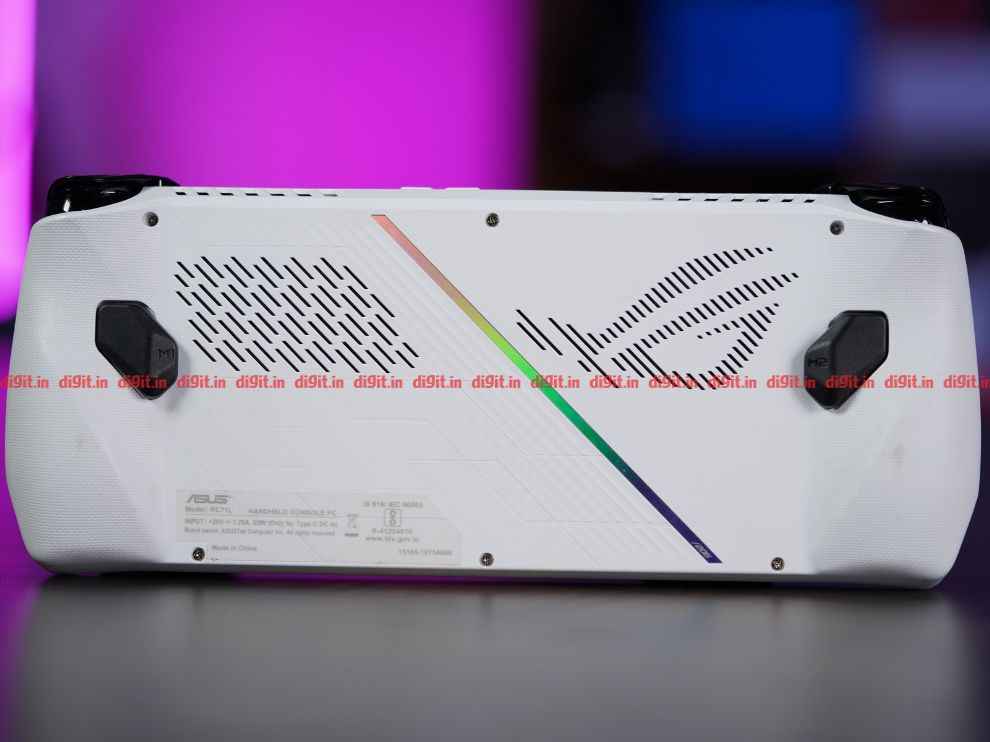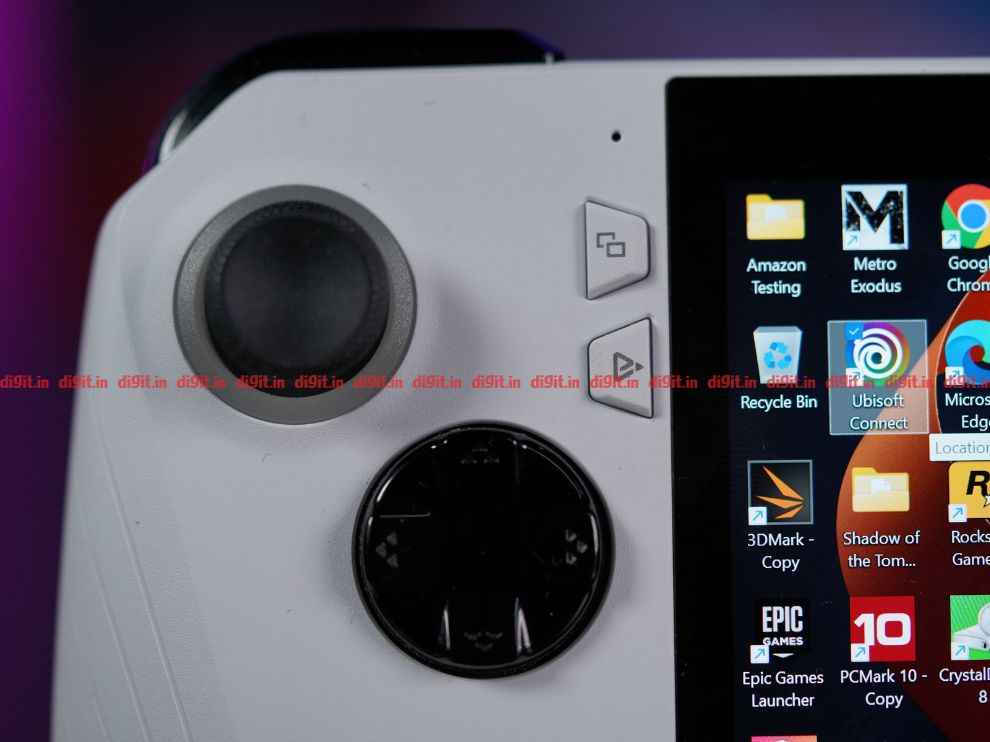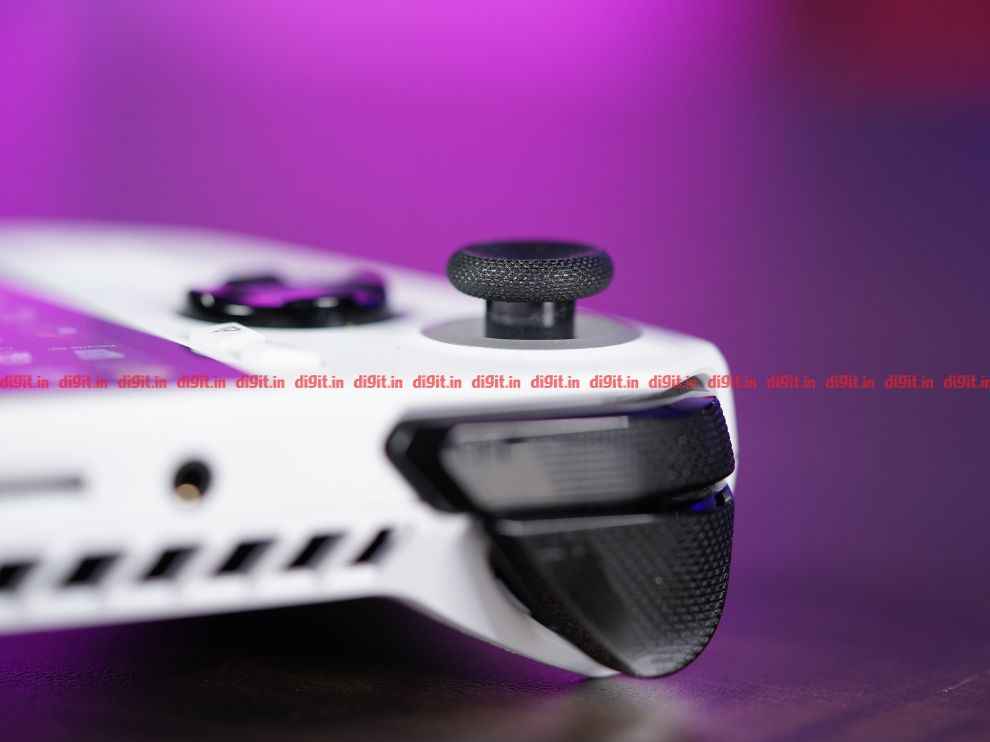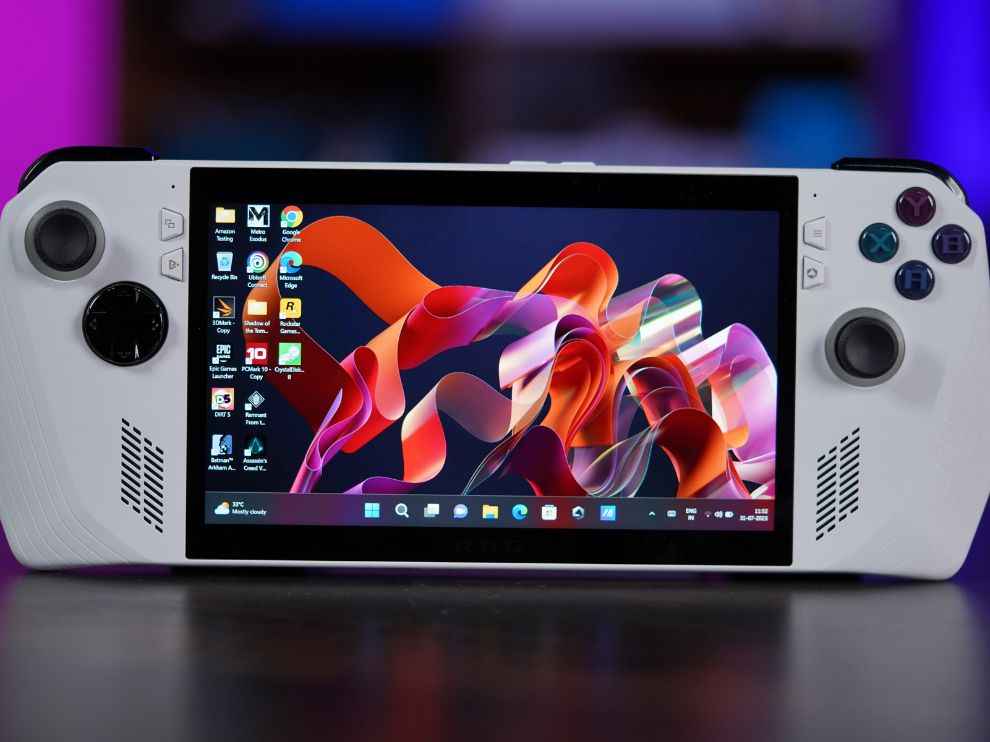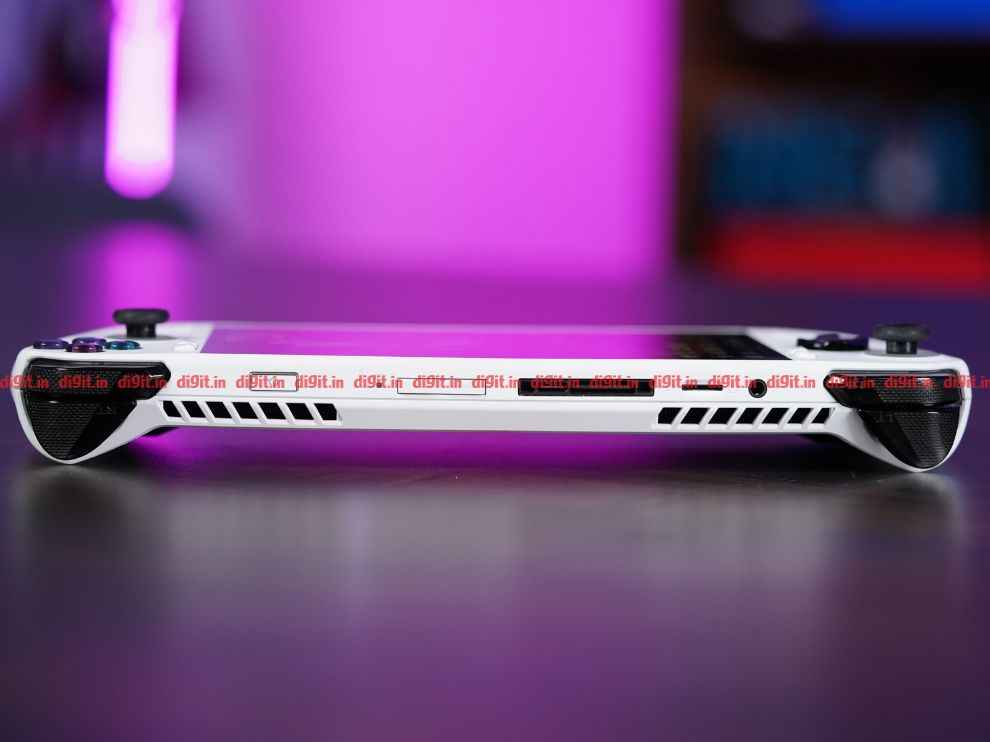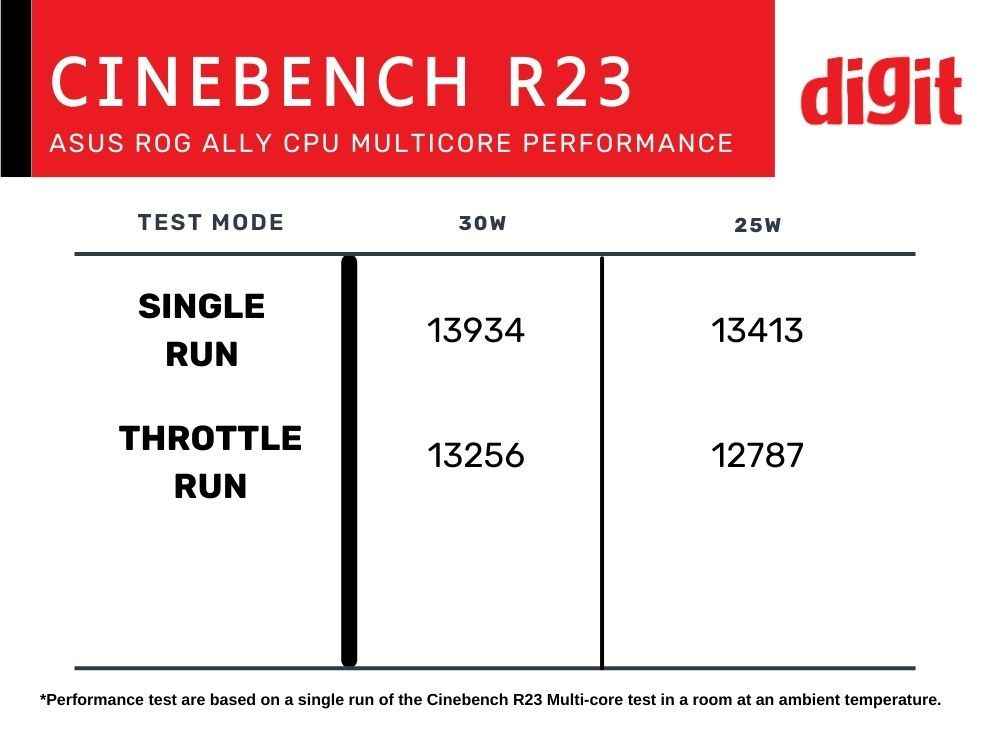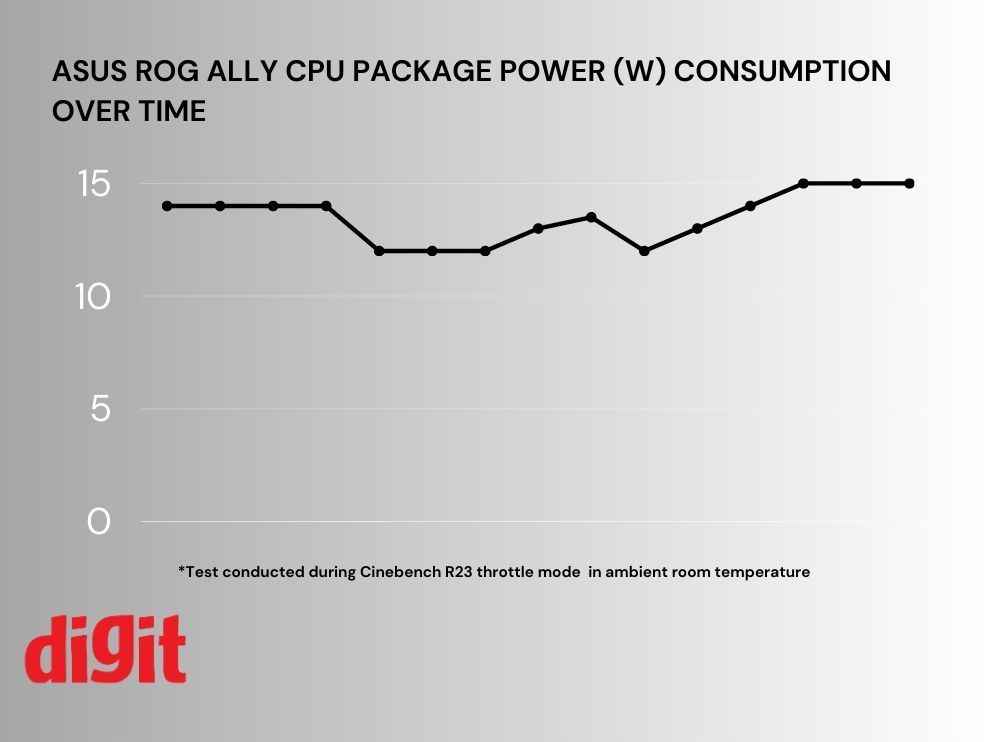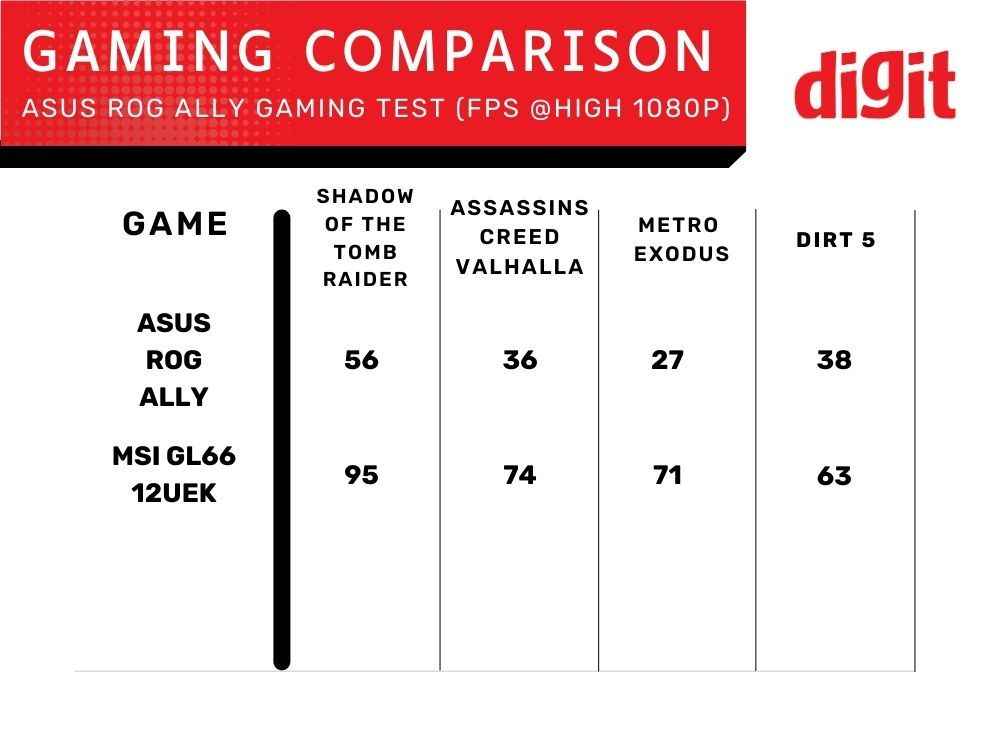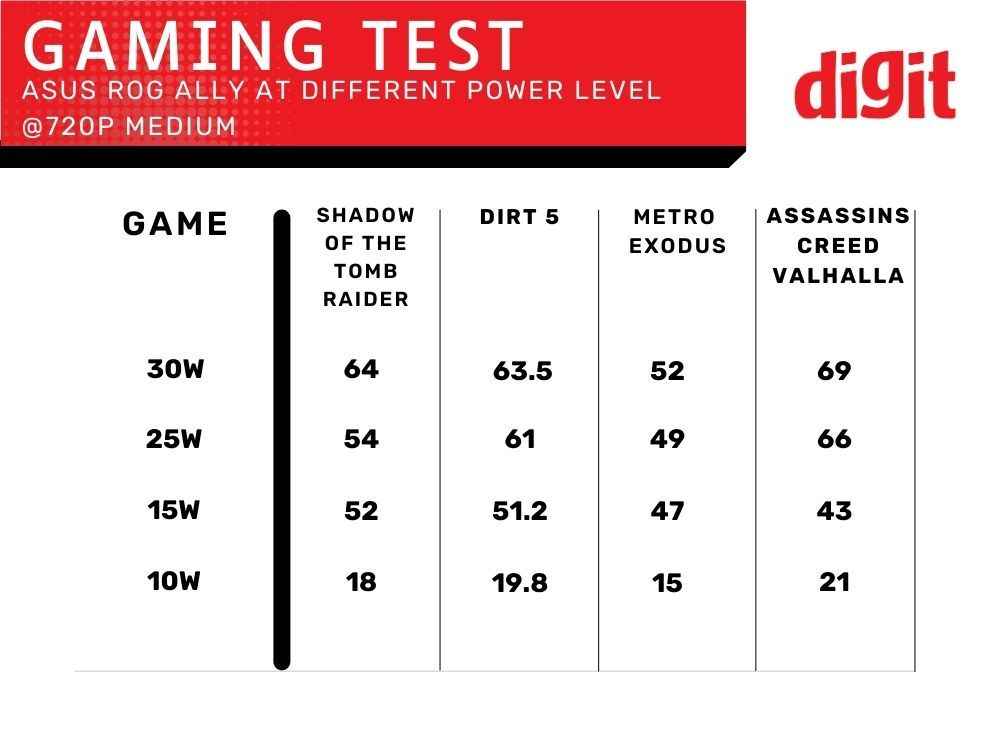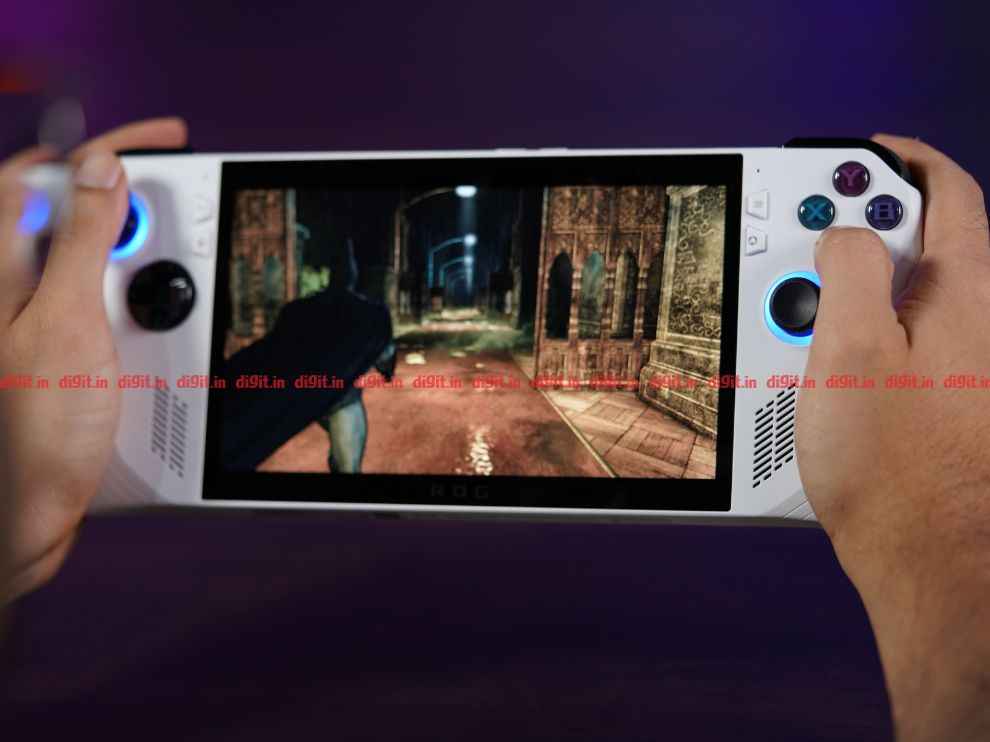ASUS ROG Ally: The Game Changer or a Risky Bet?
ASUS ROG Ally: handheld gaming with a vibrant display, but it runs hot.
Battery life and Windows reliance challenge Ally's portability.
At its price, ROG Ally competes with high VFM options like PS5 and gaming laptops.
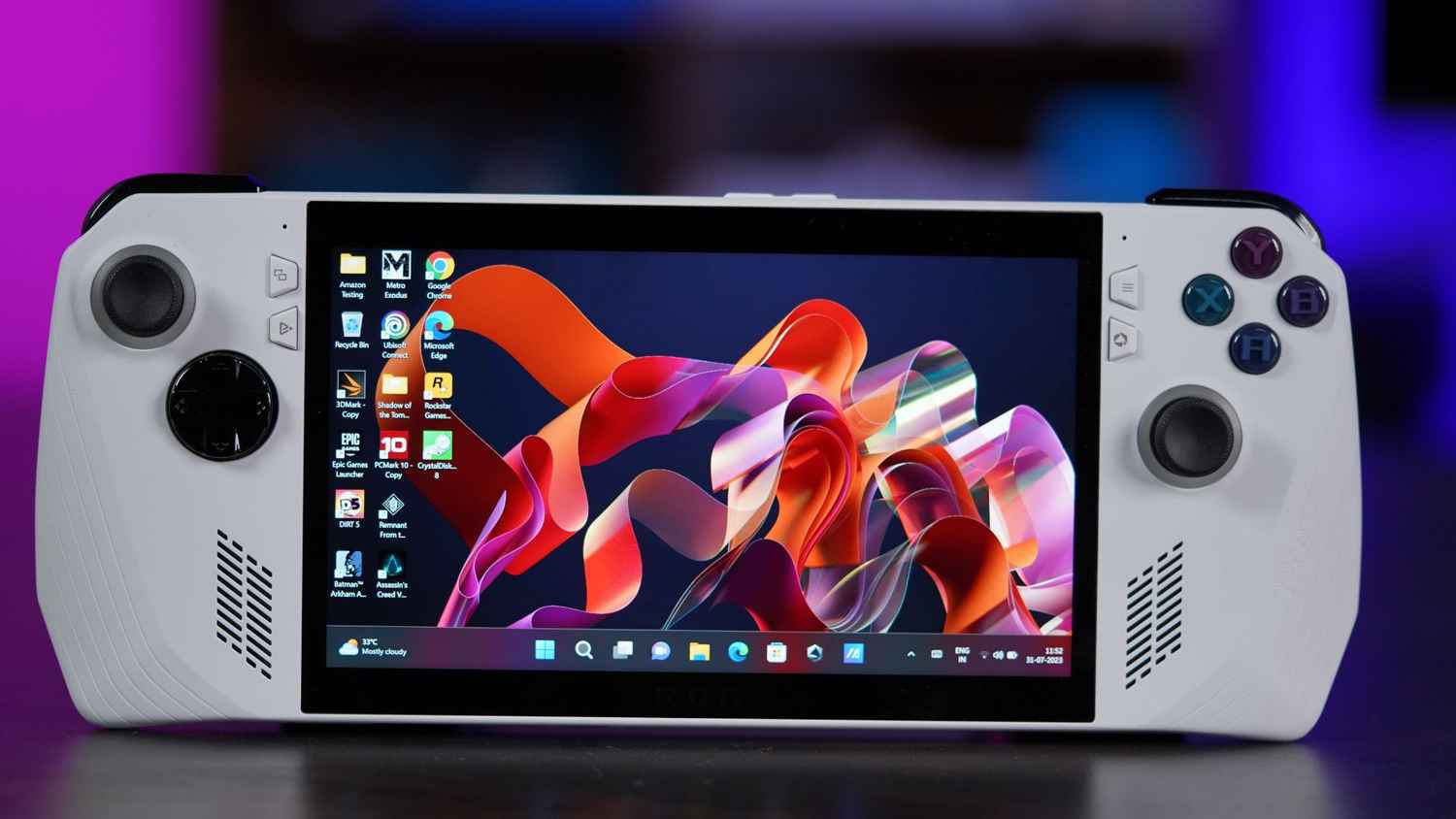
The ASUS ROG Ally is a bold and ambitious entry into the handheld gaming market. This device, which is being touted as a potential "Steam Deck killer" by its manufacturer, ASUS, is a full-fledged Windows device that offers a powerful gaming experience in the palm of your hand. The ROG Ally comes in two different SKUs, both of which feature a 7” inch 1920×1080 display with a 120Hz refresh rate, 512GB of internal memory, 16GB LPDDR5 onboard memory, and a 40WHrs, 4S1P, 4-cell Li-ion battery. The difference lies in the processor, with the cheaper unit featuring a regular AMD Ryzen Z1 processor, while the more expensive unit boasts the AMD Ryzen Z1 extreme processor. Only the latter one is available in India. Meanwhile, the latter is slated for a launch later in the US.
 Survey
SurveyAlso Read: Hp Victus Gaming Laptop 16 Review: High performance, awesome cooling but low storage
Priced at Rs 69,990, the ASUS ROG Ally goes up against gaming laptops in India. Especially because there are no gaming handhelds available here. You can get a gaming laptop powered by an Nvidia RTX 3050, a six-core processor from either AMD or Intel, 8GB DDR4 memory, and around 512GB SSD in this price range. And such a laptop outright performs better than the ROG Ally in everything except for raw CPU power. However, the Ally offers a 512GB SSD, while the base model of the Steam Deck only provides 64GB of storage. So, it's not exactly an apples-to-apples comparison.
So as of right now, it is only a one-off device. But how is it?
ASUS ROG Ally Performance Review: Design And Ergonomics
The ROG Ally's design is chunky and robust, with comfortable grips and a vivid display that makes games appear bright and detailed. However, it's not without its drawbacks. The device is heavy, weighing just over 600g, and it runs hot during extended play sessions. The fans inside the device work hard to cool it down, but they can get loud, which can be distracting during gameplay. The Ally is encased in white plastic, with black joysticks, a D-pad, and face buttons. It even has a bit of flashy RGB lighting, which I can turn off to save power (and my sanity). The front of the device is equipped with two speakers, four extra buttons that act as Start and Select and can open Asus software within Windows, and a space to grip it with my fingers.
One of my complaints about the left joystick is that it feels inconsistent. While playing Batman: Arkham Asylum, I couldn’t for my life was able to turn Batman around consistently every time I was climbing stairs while running. I faced the same issue while in Doom Eternal where it felt like beyond a certain point my character wasn’t turning even though I was turning my joystick. But apart from these two games the joystick worked well in similar action-adventure titles like AC: Valhalla, and Gears 5. I also tried playing some RTS games like Age of Mythology and Warcraft 3: The Frozen Throne and although they run fine I just can’t control them with a controller-based layout.
Also Read: MSI Cyborg 15 A12VE Review: RTX 4050 for under Rs 1 lac
On the back, you can find triggers and bumper buttons, a volume rocker, a power switch that doubles as a fingerprint reader, a headphone socket, a Micro SD card reader, and a docking port that also contains a USB-C port for charging. This can be a little tricky to spot at first, as it’s black and slightly recessed from the white casing, but once I found it, I could hit the charging target every time. There are two more buttons underneath, cleverly positioned so my fingers can hit them while I’m holding the device. The entire casing is shaped very much like a game controller, with bulges at the sides I can hold on to while keeping my thumbs on the sticks. It’s comfortable to hold, and not too heavy either. More on that later.
Also, there's a cheap piece of white vacuum-formed plastic in the box that acts as a stand. It works, in that it supports the Ally in an upright position and prevents it from falling over, but it seems a bit out of place given the build quality on display elsewhere.
ASUS ROG Ally Performance Review: How is the display?
The Ally, at 11 inches wide and weighing 1.34 pounds, seems pretty similar to the Steam Deck in size. But don't let that fool you – the ROG is actually a lot smaller because it's only 0.83 inches thick, which is half the thickness of the Steam Deck. It also only has two rear paddles instead of four, and there are no little touchpads in front like the ones Valve includes. This might be a bummer if you were hoping to play games that usually need a mouse and keyboard. When it comes to the display, Ally’s screen is definitely one of its best features. It's a 120Hz panel and its 1080p resolution is sharper than the Steam Deck’s 800p. Plus, the Ally is way more colourful and a bit brighter at around 500 nits compared to around 400 nits on Valve’s handheld. When you put them side by side, there’s no contest — Ally’s screen is way more vibrant and detailed, which is super helpful when you’re trying to read small tooltips on a small screen.
Since it is primarily a gaming device its colour accuracy is decent at best. With an average Delta E value of 3.1 and a max value of 7.3, it is not something that encourages you to do some professional-grade colour correction. However, the display has 95.9% sRGB colour space coverage meaning punchy colour reproduction while gaming, or surfing the web. The ROG Ally also has 73.1% DCI-P3 colour space coverage as well. Both these figures are similar to what you’d expect in a high-refresh-rate powered gaming laptop around the same price range.
ASUS ROG Ally Performance Review: How’s the software?
One of ROG Ally's standout features is the Armory Crate Launcher, which collates all of your Steam, Xbox games, and games installed on the hard drive into one menu. This makes it easy to switch between games and launchers, but it also highlights one of the device's main issues: its reliance on the Windows desktop mode. This can be fiddly and inconvenient on the device's small screen, and it's a constant reminder that the ROG Ally is more of a miniature PC than a dedicated handheld gaming device.
The ROG Ally's battery life is another major drawback. During high-end gaming, the device's battery life can be as short as an hour, making it unsuitable for gaming on the go. This, combined with the device's size and weight, means that the ROG Ally is more of a home-based gaming device than a truly portable one. The Asus ROG Ally is a Windows-based device that stands out for its ability to run any Windows-based apps, making it a versatile choice for both gaming and general use. It comes with Asus's own software, including the Armoury Crate, which provides a unified game library, pulling games from all installed game stores or clients.
Navigating the Ally is intuitive, though it has its quirks. The device offers different control modes, including gamepad and desktop mode, which you can switch between depending on your needs. However, the "Auto" Control Mode, which should swap between modes when appropriate, can sometimes be less than perfect. The Ally can also connect to an external display, but it only has one USB-C port, so a dock is recommended. It's compatible with Asus' separate XG Mobile eGPU for more graphics power when set up at a desk. Overall, the Ally is a capable handheld Windows PC, offering a unique blend of gaming and PC functionality. Despite a few navigational quirks, it's a strong contender in the handheld gaming market, especially for those who prefer the familiarity and versatility of Windows.
ASUS ROG Ally Review: Gaming And Performance Review
When it comes to ROG Ally’s performance, there are two main areas to focus on – its real-world gaming performance and its everyday capabilities. Because don’t forget that the ASUS ROG Ally does have an HDMI 1.4 port and can output a 1080p display at 60Hz. Which should be enough if you want to do basic computing stuff. But if you wish to do that then there is a tiny problem. You see the folks at ASUS were so happy that they’ve finally made a portable handheld gaming device that they forgot to put an additional USB port except the charging port. In all seriousness though, it is an issue.
Because there is only one USB Type-C port you will need a USB hub to connect it to an external monitor and attach a keyboard and mouse. But the moment you connect the charging port through the USB hub you won’t get access to the ultra-powerful 30W Turbo mode. And as you can see from my benchmarks there is some difference between these modes in terms of CPU as well as gaming performance. Take note however that the entire 30W isn’t being used by the CPU. As you’re aware the AMD Ryzen Z1 Extreme is an APU (Accelerated Processing Unit). Meaning the CPU and the GPU are placed on the same die. The CPU Package power during the Cinebench R23 test remains around 14-15W throughout the test.
But the good news is that it isn’t much. For instance, you can see that between 25-30W there is hardly any difference in gaming performance. So you can rest assured because the ASUS ROG Ally will give you enough power to be on the move. Or even if you decide to sit down and turn it into a desktop PC.
Now, after talking about all the peculiarities, just how good is the ASUS ROG Ally in terms of raw gaming performance? Well! Here are different charts taken at ROG Ally’s different power levels. If you're considering the use of headphones, you'll be pleased to know that this device features both an audio jack and Bluetooth 5.2 compatibility. Unfortunately, the downside is the battery's limited lifespan – it only lasts between 50 to 60 minutes. Excitingly, this model boasts two turbo modes: a 25W version and a more powerful 30W one. The latter, however, can only be unlocked when you're plugged into the Ally's designated charger. It's not compatible with other chargers, so you'll need to take good care of the original one.
Yet, the differences between the two modes are surprisingly minimal. You can witness this firsthand by observing the slight FPS differential on screen, a design choice made to guarantee a consistently fluid gaming experience. Let's talk about performance. I compared the ROG Ally against a gaming laptop set at 1080p high settings and, as anticipated, there's a discernible performance gap. The performance-per-watt (PPW) of the AMD Z1 Extreme chip is a standout feature, however. Drawing just a maximum of 30W, this chip consistently delivers smooth frame rates across numerous games, a feat that's quite remarkable. The biggest performance jump in performance you’ll see is when you turn to jump from silent mode at 10W to Performance mode at 15W. Meanwhile, the performance difference between 25W to 30W is almost negligible be it in terms of in-game FPS or outright CPU performance.
In Conclusion
To sum up, the ROG Ally is indeed a promising device despite having a few minor drawbacks. However, these issues don't hamper the overall user experience. The key question, though, is identifying the ideal market in India for this product. In the United States, where disposable income is generally higher, splurging a few hundred dollars on a device like this is not uncommon. However, in India, consumers often prioritize high Value for Money (VFM) when making purchases. Now, there's no denying that the ROG Ally delivers in that department. But, when you compare it with other alternatives like a PS5 or a gaming laptop at a similar price point, these options tend to offer more VFM. That said, if you're open to making a few compromises, the ROG Ally is indeed an attractive machine that's sure to provide a satisfying experience.
Yetnesh Dubey
Yetnesh works as a reviewer with Digit and likes to write about stuff related to hardware. He is also an auto nut and in an alternate reality works as a trucker delivering large boiling equipment across Europe. View Full Profile
